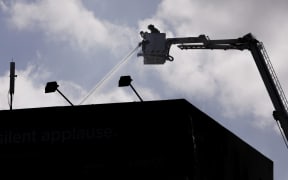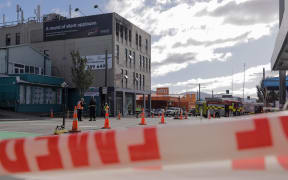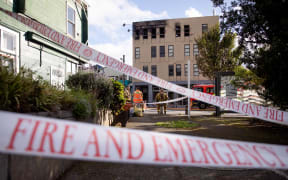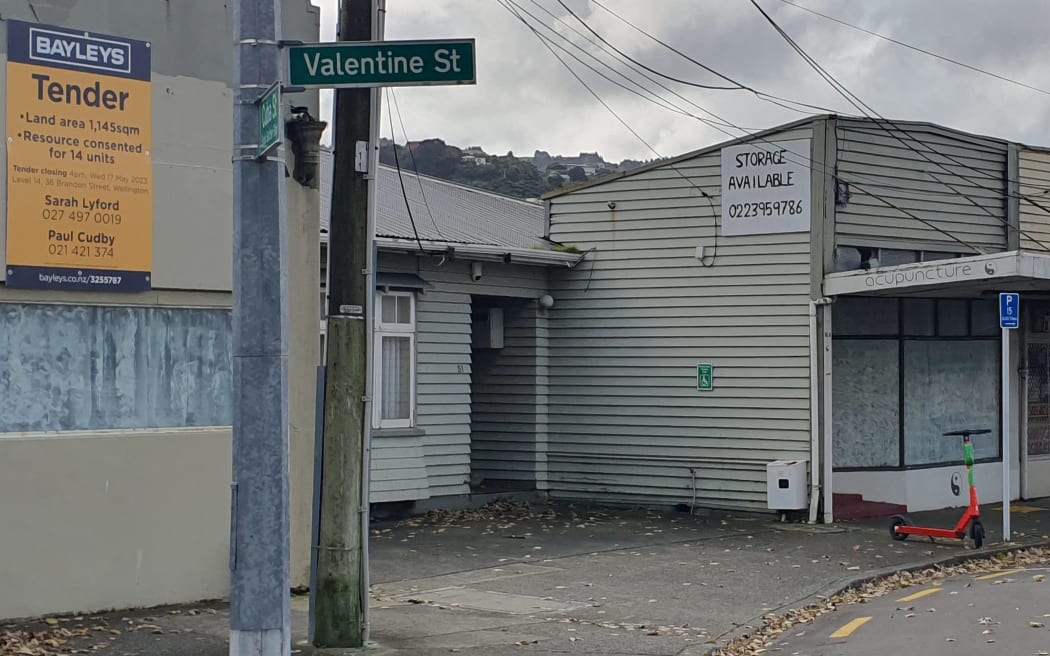
The burnt-out dairy in Alicetown on the right, and the property for sale on the left advertising 'Resource consented for 14 units'. Photo: RNZ/ Phil Pennington
Analysis - When a dairy caught fire at the end at the end of my street in April, a fire engine came from a station across the Hutt River in Seaview, rather than just down the road.
Fire and Emergency had had health and safety worries for a long time with the building occupied by the fire station 500 metres away, and they moved out 18 months ago.
No one was hurt in the dairy fire.
When Loafers Lodge caught fire last week, Wellington's largest ladder-truck came from Thorndon, rather than from Newtown fire station just down the road, because Newtown's large-ladder truck had been broken down for months.
That night, the 111 frontliners taking calls from trapped residents were short-staffed, they later told RNZ.
FENZ chief executive Kerry Gregory last Thursday said they had all the staff and specialist equipment they needed to fight the lodge fire.
But did what he said next fit?
He said the $600 million-a-year emergency response organisation had "huge legacy issues" with its ageing truck fleet, so "we're going to have some times when appliances don't make it onto the fire ground".
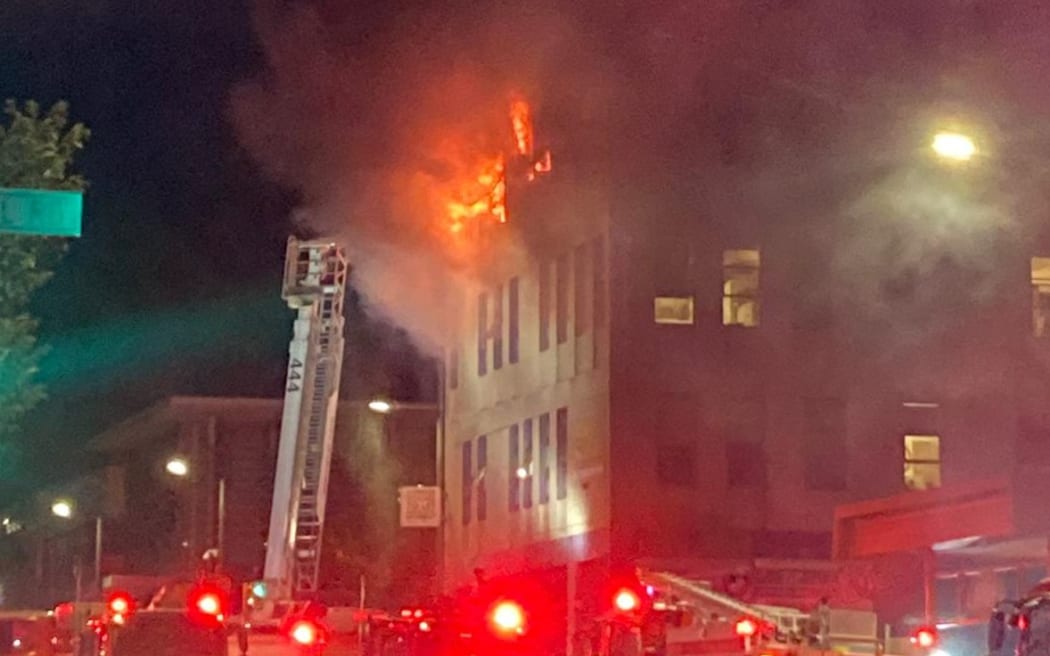
Fire fighters were reportedly upset they could not rescue more people at the Loafers Lodge fire on 16 May as one of the city's ladder fire trucks was broken. Photo: Supplied / Axel Dann
Where is the strategy?
FENZ in the Loafers aftermath said it would spend $25m a year, for the next three years, on its fleet, including $10m on five new large ladder-trucks, called aerials.
It has not given firm dates on when these will arrive.
It has gone out to buy them without a new strategy in place about what type of trucks it needs where.
Firefighters insist this take into account the likes of Auckland adding thousands of houses that are higher and closer together. They do not want to be exposed to unnecessary risks fighting fires.
FENZ began work on an aerial strategy in 2019, asking questions like, "Are there any risks or challenges with current aerial capability that have not been captured?"
The inquiry into Auckland's International Convention Centre fire three years ago said: "We think that the finalisation and implementation of a replacement aerial appliance strategy is overdue".
Read the report: Independent Operational Review on the NZ International Convention Fire
There were not enough large-ladder trucks in Auckland to fight the massive roof fire at the convention centre.
Last Thursday, FENZ told RNZ its draft 20-year aerial strategy was still being reviewed.
Where is the local plan?
The Hutt's loss of the city fire station in Alicetown leaves it without any fire trucks stationed on the west bank of Te Awa Kairangi at a time when the risk of floods is rising.
FENZ says it is working on where to relocate the station.
Meantime, Hutt crews responding to fire or flood emergencies have to cross one of three bridges to get to thousands of homes in Petone and the Western hills.
For Petone, that is within operational guidelines for response times; for the hills, it is not.
The 100,000-strong city, with more homes on a flood plain than anywhere else, might benefit from a localised plan.
The law says: "FENZ must prepare and issue a fire plan for each local area", but last Monday the agency told RNZ: "Fire and Emergency will not produce 'Local Plans'."
Local planning was "a process" for creating district, region and national plans, it said. So, not local ones. Yet in 2021 it had posted online: "Consultation on your local fire plan".
Firefighters are expressing bewilderment.
But the Internal Affairs Minister Barbara Edmonds is OK with this. The 2017 Act "refers to the process of 'local planning', rather than 'local plans'," her office said. She had confidence in FENZ "to make the best decisions about how, when, and where to respond", Edmonds said.
She had had discussions with the board chair about resourcing, "including through regulation with the transitional levy", she said two days after the Loafers fire. When RNZ asked what that meant, we got no further response.
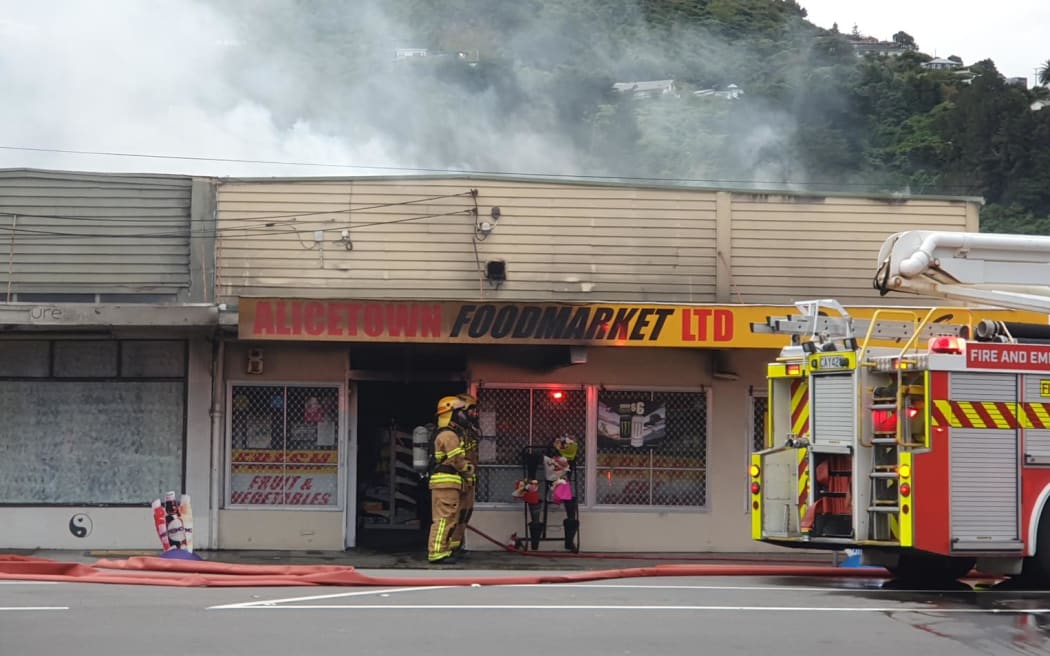
Firefighters outside the Alicetown Foodmarket, Lower Hutt on 18 April. Photo: RNZ / Phil Pennington
Where is the cover for more intensive housing?
The burned-out dairy in Alicetown sits in a short row of shops, bounded to the north by a large empty section, where a quite attractive, two-storey block of several flats once stood. It was knocked down ahead of the government rushing through law changes last August to enable much more medium-density housing.
The residents at the old block on Victoria Street moved out, but nothing has gone up yet to take its place. A few metres south of the scorched dairy, is an old building with 'C.H. Mitchell' in raised letters on its concrete front, next to a new sign reading, "Tender: ... Resource consented for 14 units."
The government opened the floodgates to such units, and the extra housing is on its way, at some stage anyway. But what about the extra fire trucks and firefighters to cover the extra housing?
FENZ says it has a plan to buy more smaller trucks, though is not clear when. It has also done work on how to boost firefighter numbers, especially in Auckland. But the union warns many members are approaching retirement age, without a solution.
Another response would be to buy time at actual fires. They risk spreading faster once homes go up much closer together if houses are built to existing standards. So building regulator MBIE began work a year back to include townhouses and the like under raised minimum standards. One change would have added maybe 40 percent to the cost of external walls to resist fires for longer.
But earlier this month, the housing industry balked at key changes, sending the ministry back to the drawing board.

